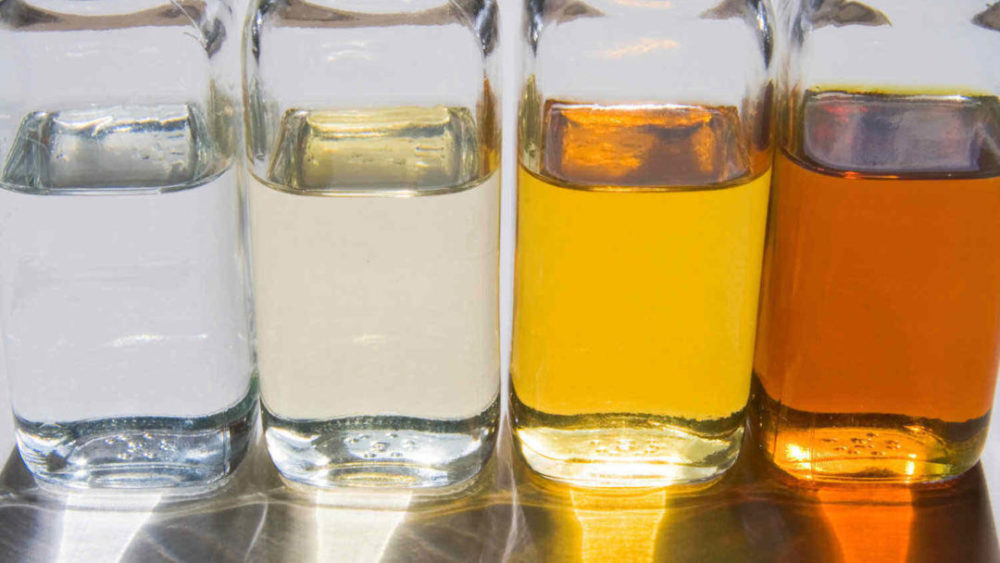Process oil suppliers traditionally place most products into one of three categories, but these traditional indicators of color stability don’t always tell the whole story.
In general, these categories cover the spectrum of desired qualities for use in rubber, EPDM and TPE (thermoplastic elastomer) manufacturing:
- Aromatic – dark, low color stability, great solvency
- Naphthenic – lighter in color, varying stability, intermediate solvency
- Paraffinic – lightest in color, high color stability, inert
But for certain end products, engineers need to consult with process oil suppliers to consider unique solutions. Only the right mixture of characteristics will hit the “sweet” spot.
The Challenge of Finding the “Sweet” Spot
When selecting an appropriate extender, product engineers can choose from a variety of process oil products for certain end products within the proper category.
Others have more exacting specifications. For these, we need to look beyond category to find the right point on the product spectrum.
Matching End Product to Oil Category
Examples of end product/process oil category matches that are generally acceptable include:
Aromatic
When color doesn’t matter, the high reactivity of aromatic process oils are acceptable. These include automobile tires, tread rubber, conveyor belts, and other applications where the color is typically black.
(Automotive interiors are another matter, however. Color stability and low volatility are important both for color match and to avoid the release of VOCs – volatile organic compounds.)
Naphthenic
When color and thermal stability is more important, the comparatively lower reactivity of naphthenics are suitable. These include darker-colored rubber products such as hot water bags and LPG (liquified petroleum gas) hoses where color stability is not important.
Paraffinic
At the other end of the spectrum from aromatics, paraffinic rubber process oils are nonreactive (inert), giving them the highest color stability and lowest VOC risk. These are widely preferred in the manufacture of footwear, furniture polish, insulation, textiles, soft touch elastomers and many more products.
Matching End Products to Select Oils
Color stability depends primarily on a process oil’s reactivity. The degree to which the compounds contain reactive elements, such as sulfur and unsaturated molecules, determine color stability. Highly-refined paraffinic process oils appear crystal clear and support the production of white and light-colored soft touch elastomers.
For some products, finding the exact “sweet” spot for solvency with high color stability is particularly important.
These include certain lightly-colored or translucent end products:
- Some hot-melt adhesives
- Pressure-sensitive adhesives
- Lightly-colored rubber and elastomer gaskets
- Some resins and polymers
For color stability, the ideal process oil to use an extender would seem to be paraffinic.
Color stability is important to avoiding yellowing of glue-gun sticks, non-black gaskets, TPEs and similar products, which can negatively affect consumer perception of quality.
But there’s a problem.
Paraffinic process oils do not provide enough solvency for these higher polarity materials. In some use cases, non-polar paraffinic mineral oil may migrate to the surface, reducing its effectiveness.
This may suggest that a naphthenic process oil is the better choice.
The greater solvency in naphthenics can help maintain product performance by preventing oil migration, which leads to hardness and brittleness.
Does this mean you have to sacrifice color stability?
In this case, we need a specific product that straddles the line between process oil categories, offering the desired qualities of both.
Renoil 500-X is our custom solution.
Always Hit the Sweet Spot: Make Signal Fluid Solutions Your Process Oil Supplier
As experienced process oil suppliers, we work with our refiner partners to help our customers find the perfect “sweet” spot by developing products like Renoil 500-X.
This highly refined naphthenic process oil provides the solvency needed to prevent oil migration, keeping end products soft and supple.
It also is light in color with better stability than typical naphthenic process oils, offering “paraffinic-like” technical grade clarity (Saybolt +20).
Renoil 500-X Test Results
| Properties | ASTM | Specification | Results |
| API Gravity | D4052 | 28 | |
| Color | D1500 | 1 | |
| Density (lbs/gal) | D1298 | 7,390 | |
| Flash Point F(C) | D92 | 420(216) min. | 457(236) |
| Pour Point F(C) | D97 | 10(-12) max. | 10(-12) |
| Specific Gravity @60F | D4052 | 0.8869 | |
| UV Absorptivity, 260mm | D2008 | 2 (Typical) | |
| Viscosity @100F SUS | D2161 | 533 | |
| Viscosity @40C, cSt | D445 | 95 min. / 100 max. | 102.0 |
| Viscosity @100C, cSt | D445 | 10.6 | |
| Odor | SM366-98 | Min. = Typical | Typical |
| Appearance | SM366-98 | Min. = Clear & Bright | Clear & Bright |
If there’s one thing to know about Signal Fluid Solutions, it’s that we are problem solvers.




